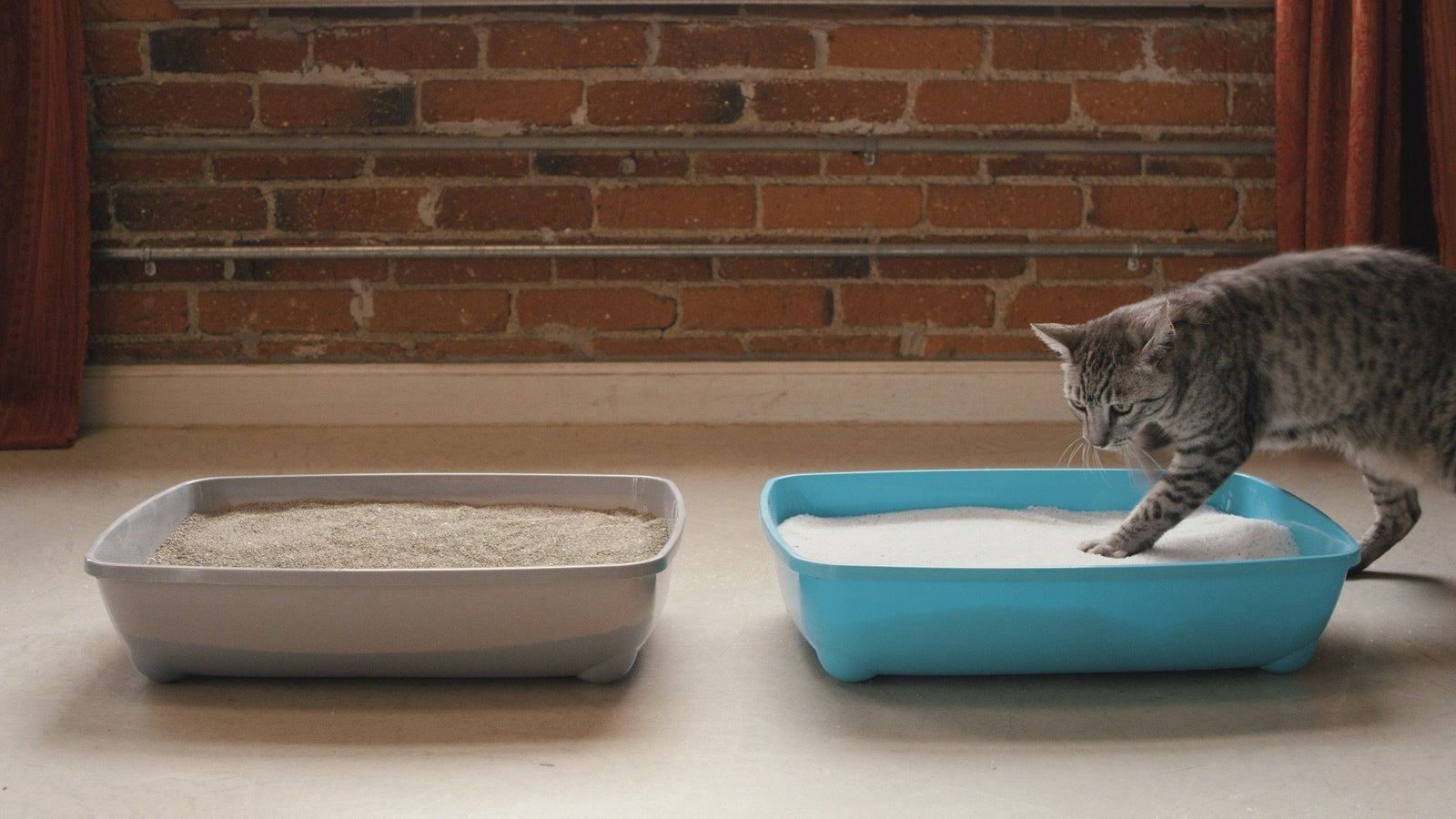
Switching from heavy litter to lightweight litter? Or, better yet, from clay litter to PrettyLitter?
If you’re planning on changing up your cat’s poop dirt, you’d better be prepared for a bit of a power struggle with your cat.
While some cats couldn’t care less about the medium between their toes when they do their business, others are extremely particular and don’t fare well with change.
Hope for the best but prepare for the worst with this quick guide for transitioning your cat to a new type of cat litter.
Play a Little Trick

When you first start using a new cat litter, you want your cat to feel as comfortable and familiar with the new scenario as possible. If you can trick your cute kitty into thinking nothing has changed, that’s even better.
Start by filling your litter box up with about an inch and a half of your new litter. If you’re using a self-cleaning litter box with very specific load limitations, fill your litter box 75% of the way full with the new litter. Then, top it off with about a half-inch (or the remaining 25%) of your old litter.
This top layer will simultaneously trick Kitty into thinking she’s home sweet home, while also allowing her to gradually get used to the smell and texture of your new litter as she shuffles around in the mixture.
If you’re using two different litters - don’t worry. When you sift out the solid waste from your new litter, the clumps of old litter will come out with it.
When you eventually swap out your cat’s litter, fill it with only your new litter. Fluffy will be used to the new stuff and won’t be any the wiser.
For More Stubborn Cats

Some cats are just stubborn. They like things to go their way all the time. If your cat is one of these princess types, there are a few other things you can try.
First, some cats get confused when they step into a new litter because it doesn’t conjure up all the same sensory memories as their old litter did. Cats begin to associate the smell and feel of their litter with potty time. To help your cat rebuild a new association with the new litter, place a few pieces of feces from the old litter into the new litter when you first introduce the new option.
Yes, we know it’s gross. But it may be just what your cat needs to understand that this is the new potty place.
Because bacteria can grow on feces, we recommend leaving the old bits in the new litter box just long enough for your cat to get the memo. Once your cat has gone in the new litter box and done her thing, go ahead and remove the feces, giving Kitty a clean experience once again.
Another option for stubborn kitties is to reward their good behavior. If you see your cat going into her litter box with the new litter, reward her as soon as she comes out. Be sure not to scare her with a whooping, “Yay! You went to the potty!” celebration. That could be counterproductive. But a few of her favorite treats placed just outside the litter box will do the trick.
Above all, don’t punish your cat for going to the bathroom in the wrong place. Of course, finding cat “presents” or puddles in the house is enough to send anyone through the roof. But your cat doesn’t know any better. Punishing your cat will only cause stress that can lead to more bad behaviors.
Make It Easy On Your Cat

Imagine waking up to find that your potty has completely changed size, color, and texture over night. You’d likely be a little freaked out and not quite sure what to do. You may even be more likely to ask your neighbor if you can use her facilities rather than face the unfamiliar fixture in your bathroom.
That’s what your cat goes through when you change cat litters. While most cats don’t think too long and hard about why their potty place suddenly looks different, others take major notice.
To make it as easy as possible on your picky cat, be sure to change only one thing at a time. Changing your cat’s litter box, litter, and litter box location all at once is a recipe for several accidents. Do your cat - and your carpet - a favor and pace yourself.
Start by changing your cat’s litter, as that’s what’s most likely to impact your cat’s health. We’re assuming, of course, that you’re switching to a healthier, dust-free cat litter that discourages bacterial growth.
Then, once you have the best cat litter, you can upgrade to a better cat litter box, too. Once your cat adjust to that new change well, then you can consider relocating Fluffy’s restroom to a different part of the house.


Follow Us